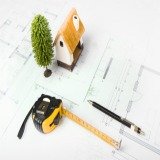Home Addition Floor Plans - Tips You Should Know Before You Build Your Addition
Home addition floor plans can be a great way to get more space and comfort from your home, but there are some tips and secrets that you should know before you plan and start this type of project. It's also important that you have realistic ideas of exactly what will be needed to make your addition project successful!
 Plans for home additions are usually less expensive than selling your home and moving to a house more suitable, and you can create the space and
rooms that you want instead of working with what you have already. I'd like you to keep some tips and professional advice in mind when looking at
any possible plans for your project that can help ensure your addition goes smoothly and there are no errors.
Plans for home additions are usually less expensive than selling your home and moving to a house more suitable, and you can create the space and
rooms that you want instead of working with what you have already. I'd like you to keep some tips and professional advice in mind when looking at
any possible plans for your project that can help ensure your addition goes smoothly and there are no errors.
If you're considering an addition there are many elements that you will need to look at, and each will help you determine the right type and size of addition. Each component will affect whether or not a specific plan will be ideal in your specific circumstances.
Your family size, existing home structure, design, available land, expansion room, budget, space needed, and even future considerations you might not have thought of will need to be evaluated so that you can get the most from the home addition floor plans that you will be choosing.
Tips To Think About When Considering Addition Plans
- Consider utility costs, because if your home addition adds a substantial amount of space to be heated and cooled this can be a big monthly increase in your utility bills.
- Compare plans to find the least expensive choice that will fit your needs and preferences. Some plans will cost more to execute with your current home without offering more benefits.
- Know your local building codes and what is allowed where you live. Local building codes vary from one municipality to the next, and certain addition types or designs may not be permitted in your specific area.
- Evaluate money saving designs available with plans for home additions, such as adding a second level which will capture heat released from the first floor in the winter or expanding a finished basement which stays cool in the warmer months.
- Use materials which are more energy efficient whenever possible, even if the cost is a little more than your other choices.
- Consider window placement to allow maximum sunlight and access to any cooling breezes in your area.
- Consider any future needs you may have when viewing home addition floor plans. If you will need to expand again within the next decade or so it will be cheaper to add all the room you need at once instead of undertaking two addition projects.
- Examine whether you will need to upgrade your electrical and plumbing systems with the home addition that you choose. If you add an entire floor or an in law suite you may need to add another box or additional components as well.
Saving Money with Home Additions
There are a number of ways that you can save money on plans for home additions, and these can range from small savings to a significant amount. Before you even look at plans you'll need to consider exactly how much space you'll need to add, and what type of space or rooms the addition will include.
 Before you can utilize a home addition you will need a blueprint or drawing for the project, and there are a number of ways that you
can get these drawings and save money at the same time. For a custom addition you may need to hire an architect to draw up a blueprint, and this
is extremely expensive and can take some time to accomplish.
Before you can utilize a home addition you will need a blueprint or drawing for the project, and there are a number of ways that you
can get these drawings and save money at the same time. For a custom addition you may need to hire an architect to draw up a blueprint, and this
is extremely expensive and can take some time to accomplish.
To get the required drawings for your home addition floor plans you can use a home designer who will typically charge less than an architect, or you can hire a contractor who may take care of this aspect for less as well. A better way is to use the plans that can be found and purchased online.
You can also draw up your own plans for home additions with different home design software packages, but these plans must include all of the required elements and be complete. You must also make sure that any plans you draw up meet your local ordinances and building codes.
Choose Home Additions That Maximize Space and Comfort with the Least Effort
When you consider using a home addition floor plan one aspect that you need to look at is how much reconstruction is really needed to get the space you want and need. Some plans can make use of existing space and may require little renovation to expand your living areas, while other plans may include aspects that may require a lot more renovation to get the same results.
If you have a basement that is not used because it is not finished, or has problems with leaking or mold, then you may want to consider home addition floor plans that utilize this space and finish the basement so that it can be used for a living area (after you address the leaking or mold, of course). This will maximize the space and comfort that your home offers without requiring a lot of new construction and significant expansion room.
Another tip is to get everything you need from any home addition floor plan you choose for your home, and choose plans that offer the most benefits. If you want a garage or storage area and also need to add living space why not use a plan that features a garage below and an apartment or home extension above?
When viewing plans for home additions carefully consider which plans are the most effective with your existing home floor plan. You don't always have to add a lot of square footage if your needs are modest, but you should consider all of your space needs and determine which plans are most cost effective while also giving you the comforts you want from the project.
Home Addition Floor Plans and Your Home Value
 A cost versus value analysis should be done before you even decide on a specific home addition floor plan, to determine what the cost estimate of
the project is and how your home value will be affected once your addition project is complete. Often renovating your home for an addition will
increase the value, but this is not always the case, and you may not recover your addition expenses if you ever sell your home.
A cost versus value analysis should be done before you even decide on a specific home addition floor plan, to determine what the cost estimate of
the project is and how your home value will be affected once your addition project is complete. Often renovating your home for an addition will
increase the value, but this is not always the case, and you may not recover your addition expenses if you ever sell your home.
Many homeowners make the mistake of assuming if a twenty thousand dollar addition is added then they will recover most of this cost eventually, because this project has increased the value of the home significantly. There are many other factors that need to be calculated as well though, including the sales prices in your neighborhood (at the current time) and the value of your home before the project is started.
Home addition floor plans which are very expensive to execute or include extravagant features may cost more to complete than other types of plans, and it's usually unlikely that these renovations will increase the value of the home enough to recover your costs. If your home is already near the top of your neighborhood home value range then even a small renovation could cause your value to max out for your area.
Using a cost versus value analysis with plans for home additions can help you determine whether a project will be cost effective or not, so that you can make an informed decision on whether to choose a different plan or go ahead as scheduled.
Important Initial Steps with Any Home Addition Floor Plans That Are Often Overlooked
- Any required building permit requirements should be known, so that you can ensure these requirements are met
- A home inspection should be performed before any home addition floor plans are considered, to ensure your home can safely handle the renovations
- Creating a construction list, with each step planned out with complete details
- Making a materials list and determining which materials to use
- Pricing materials before signing any contract with a contractor
- Creating a project schedule
- Plumbing permits and labor
- Electrical permits and labor
- Not allowing for material delivery delays and price variations
- Not creating a project budget that is realistic, and then sticking to it
- Not including any inspection fees and permit costs in the construction budget
A Home Inspection Should Be Done Before Implementing Home Addition Floor Plans
A big mistake that is frequently made by homeowners is failing to have a home inspection performed before thinking about any plans for home additions. A home inspection will ensure that your home is structurally sound, and that any renovations will not cause problems in the future.
If you are using home addition floor plans that involve a second story or adding an entire wing then it is important that all the plumbing, wiring, and structural components of your home are inspected before the renovations start, for a number of different reasons. The first is that this inspection will identify any problems early on, so that they can be corrected before becoming more severe.
Another reason to have a home inspection done before you start any reconstruction is that you will have verification of the condition of your home just in case something happens. Contractor horror stories abound, and if a contractor or other worker makes a mistake or causes any damage during the home addition floor plan project you will be able to show that the issue did not exist previously.
In addition to a home inspection you will also have to go through a number of building inspections by your local building officials when you use home addition floor plans to improve your home. It's better to have any problems pointed out in a home inspection and have any needed repairs done before the building inspector identifies them, otherwise there could be delays or even permits that are pulled until these issues are resolved.
Finding Tips about Home Addition Floor Plans
The Internet is full of construction tips and building advice concerning plans for home additions, in addition to the tips listed in this article. Before you start any construction project it is essential that you understand each aspect of the project thoroughly, and that you have planned out each step meticulously.
Home addition floor plans come in many different types, sizes, and price ranges, and the best choice will depend on your own unique circumstances and situations. There are ways to save money and get the addition that you want at the same time, when you take advantage of the tips available.
Getting Answers about Home Addition Floor Plans Is Crucial Before You Start
 Before you begin any project with home addition floor plans it is essential that all of your questions have been answered, and that you understand
the renovation process and requirements very clearly. This will prevent any problems or mistakes after you have started the construction and
renovations, at which time it can be much more expensive and take a lot more time to deal with.
Before you begin any project with home addition floor plans it is essential that all of your questions have been answered, and that you understand
the renovation process and requirements very clearly. This will prevent any problems or mistakes after you have started the construction and
renovations, at which time it can be much more expensive and take a lot more time to deal with.
Planning your project using plans for home additions should cover every aspect, and forgetting or ignoring certain steps that may not be required but which are recommended can be a costly error that you may regret later on. If you are not sure about something or still have questions then you should not start your project until you find the answers, or follow the hidden tip and advice given.
Home addition floor plans can be a good way to get the room you need without having to move to a new home, but you should know exactly what you are getting into and what will be required before you decide to start this type of project. Many homeowners believe that all that must be done to add on to their home is hiring a contractor, but there are many other elements involved in this type of project that are discussed above.
You Might Also Like:
Home Design Floor PlansHome Design Floor Plans |
Green Home DesignsGreen Home Design |
Boat Home PlansBoat Houses |












